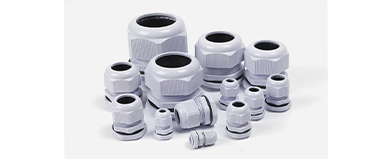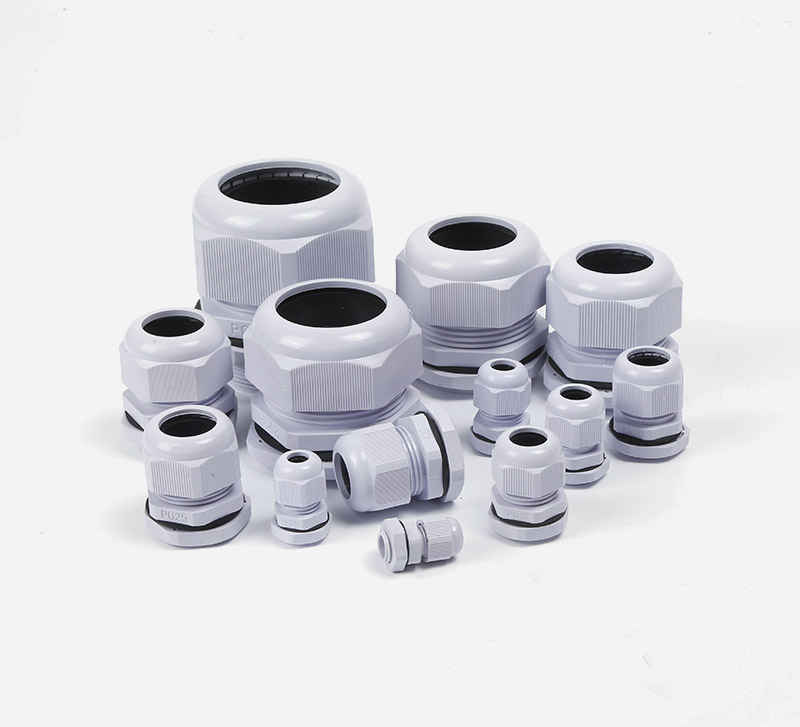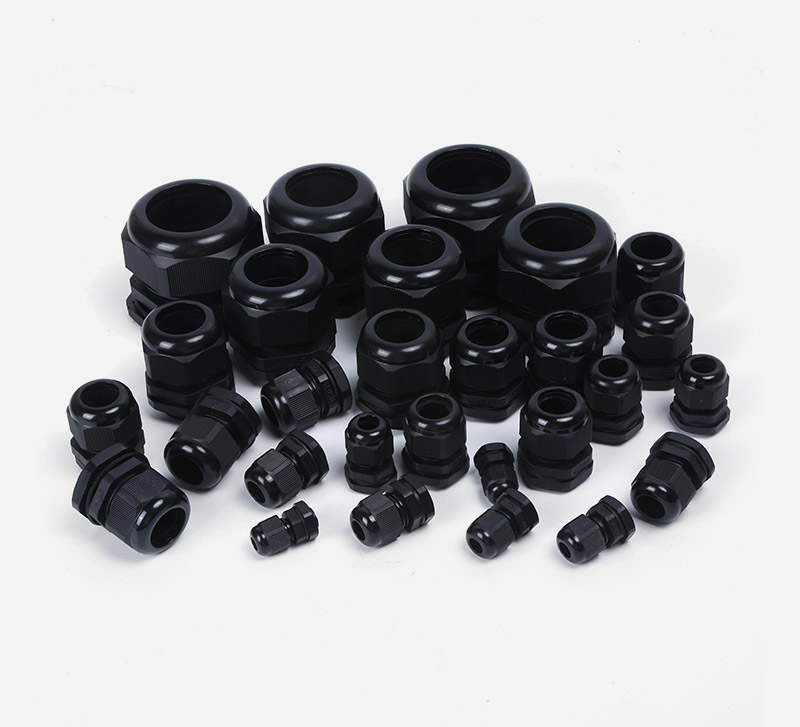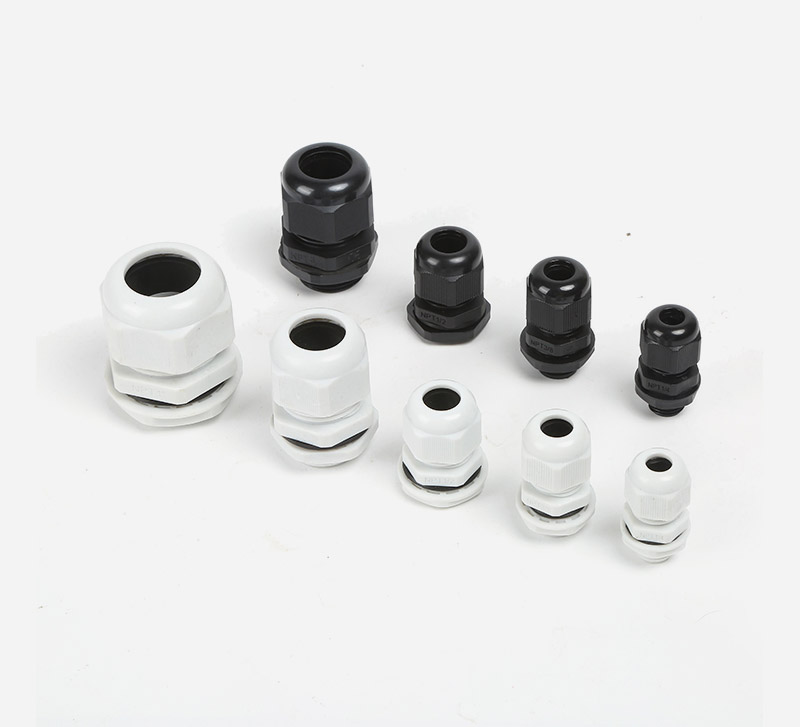Explosion-Proof to Nylon: Choosing and Installing Cable Glands for Every Environment
As the "safety barrier" of industrial electrical systems, the selection and installation of cable glands directly impact equipment protection performance and operational reliability. Based on IEC 62444 standards and industry practices, this article analyzes the selection logic and critical installation steps for three mainstream cable glands (explosion-proof, stainless steel, and nylon) in different environments.
I. Core Selection Principle: Environment Dictates Material
1. Explosion-Proof Cable Gland
•Applications: Explosive gas/dust environments (e.g., petrochemical, coal mining, pharmaceutical workshops).
•Key Requirements:
Must pass explosion-proof certifications (e.g., ATEX, IECEx, such as Ex II 2G Ex db IIC T6 Gb).
Armored cables require matching armored clamping designs to ensure grounding continuity.
Protection rating must reach IP66/IP68 to prevent flammable gas intrusion.
2. Stainless Steel Cable Gland
•Applications: High-humidity, salt-spray, or chemically corrosive environments (e.g., marine engineering, wastewater treatment, food processing).
•Key Requirements:
Material is typically 316 stainless steel, compatible with environmental media (e.g., avoid contact with acidic substances).
Thread types (e.g., M20, PG13.5) must match equipment inlet ports.
May integrate O-ring seals for enhanced waterproofing.
3. Nylon Cable Gland
•Applications: Dry, low-pollution indoor or light-duty environments (e.g., automation equipment, electrical control panels).
•Key Requirements:
Material must meet UL 94 V-0 flame retardancy standards, tolerate temperatures from -40°C to +100°C.
Lightweight design suitable for frequent disassembly.
Non-armored cables require stress-relief structures.
II. Five-Step Selection Process
1. Measure Cable Parameters
•Outer Diameter (OD): Use a micrometer to measure the total cable OD (armored cables require measuring both armor layer OD and inner sheath OD).
•Armor Layer Diameter: For explosion-proof glands, ensure armor layer matches clamping mechanisms.
2. Match Gland Type
| Material | Recommended Model Example | Compatible Cable Types |
| Explosion-Proof | WZCHDA EX-M25 | Armored/non-armored explosion-proof cables |
| Stainless Steel | WZCHDA SS-316-PG16 | Non-armored stainless steel cables |
| Nylon | WZCHDA NY-PG11 | Non-armored PVC/rubber cables |
3. Verify Certifications and Standards
•Explosion-Proof Glands: Must meet both explosion-proof certifications (e.g., ATEX) and protection ratings (IP68).
•Stainless Steel Glands: Must comply with ISO 1043-1 (material labeling) and EN 60423 (cable gland standards).
Nylon Glands: Must pass RoHS certification for environmental compliance.
4. Evaluate Environmental Compatibility
•Temperature Range: Nylon glands may embrittle below -40°C; switch to cold-resistant materials.
•Vibration Scenarios: Explosion-proof glands should use anti-vibration pads; prioritize stainless steel.
5. Prepare Installation Tools
•Explosion-Proof Glands: Use a torque wrench (e.g., 25-30 N·m) to ensure armor clamping force.
•Stainless Steel Glands: Apply PTFE tape or thread sealant for enhanced sealing.
•Nylon Glands: Avoid over-tightening to prevent plastic deformation.
III. Critical Installation Steps
1. Explosion-Proof Gland Installation
Strip the cable outer sheath to expose the armor layer (length ≥30mm).
Slide the gland body onto the cable and tighten the armor clamping nut to the specified torque.
Ensure the grounding terminal connects reliably to equipment grounding.
2. Stainless Steel Gland Installation
Clean the equipment inlet port and apply waterproof sealant.
Use a diagonal tightening method for threaded connections to avoid stress concentration.
Test sealing performance: Inject compressed air (0.5 bar) and submerge in water for bubble-free verification.
3. Nylon Gland Installation
Match cable stripping length to the gland inlet hole (typically 10-15mm).
Use a dedicated crimping tool to secure the seal ring and prevent cable loosening.
Inspect seal ring aging every 6 months.
IV. Common Issues and Solutions
| Problem Scenario | Explosion-Proof Gland | Stainless Steel Gland | Nylon Gland |
| Large cable OD variations | Choose adjustable armored clamping designs | Switch to elastic seal rings | Replace with larger OD models |
| Material failure due to chemical corrosion | Upgrade to all-copper core glands | Switch to Hastelloy alloy | Use PTFE material |
| Loosening caused by high-frequency vibration | Add anti-vibration pads | Add anti-vibration pads | Use cable ties for auxiliary fixation |
V. Industry Trends and Innovations
•Smart Glands: Integrated temperature sensors (e.g., WZCHDA Smart Gland series) enable real-time cable monitoring.
•Eco-Friendly Materials: Bio-based nylon glands (e.g., PLA) are gradually replacing traditional plastics.
•Rapid Installation Design: One-click snap structures (e.g., WZCHDA Quick-Lock series) reduce installation time by 50%.
Conclusion
In conclusion, the selection of cable glands hinges on balancing environmental demands, cable specifications, and functional requirements. Explosion-proof glands safeguard critical systems in hazardous zones, stainless steel variants excel in corrosive settings, and nylon cable glands offer lightweight, cost-effective solutions for dry, low-risk environments. For engineers and installers, prioritizing certified products (e.g., ATEX for explosion-proof, RoHS for nylon) and leveraging manufacturer resources—such as 3D installation guides—ensures optimal performance.
As industries evolve, innovations like bio-based nylon cable glands (e.g., PLA materials) and smart sensors embedded in explosion-proof designs are reshaping standards. By aligning material choice with operational needs, professionals can ensure reliable, long-term system safety while embracing sustainable and intelligent advancements.
References
IEC 62444:2007 Safety Requirements for Cable Glands
ATEX Directive 2014/34/EU Explosive Atmosphere Equipment Directive
UL 50 Standard for Enclosures for Electrical Equipment







